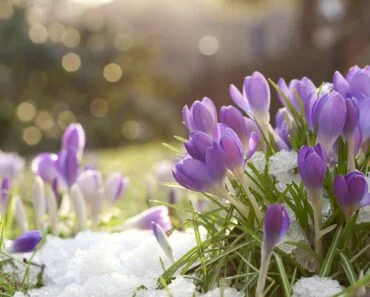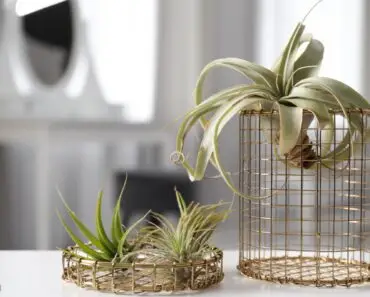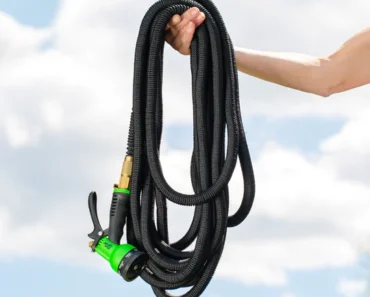Annual Statice might be just what you need! In this article, we will cover everything you need to know about planting and growing Annual Statice, from choosing the right location to harvesting the beautiful flowers.
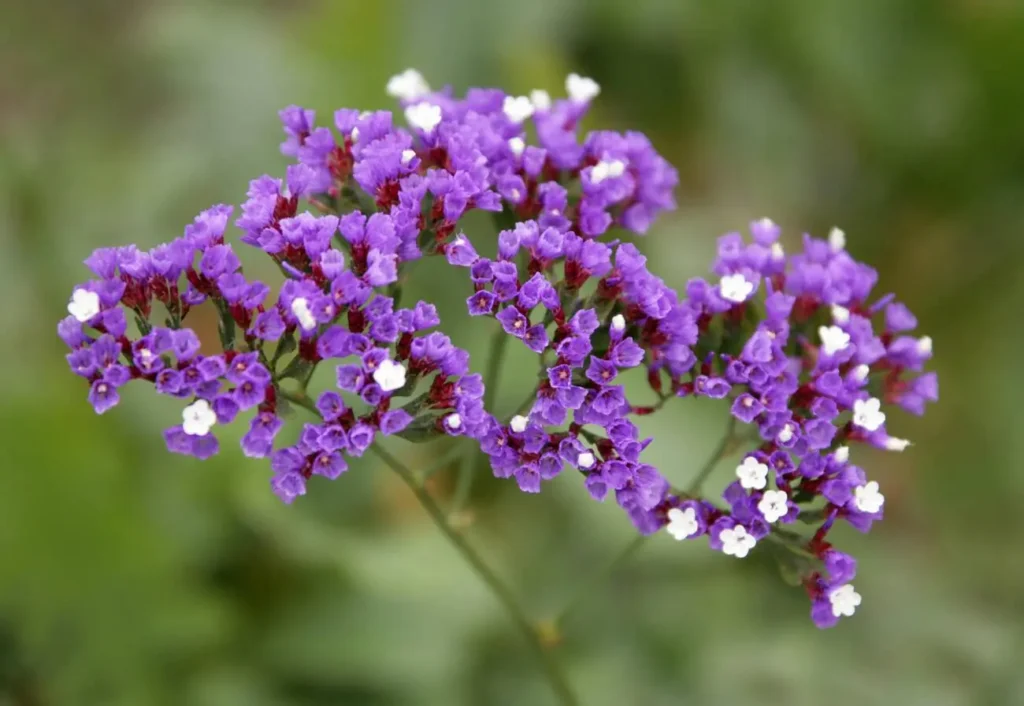
Discover the ideal climate, sunlight requirements, soil type, planting methods, care tips, and harvesting techniques for this stunning plant.
Keep reading to become a pro at growing Annual Statice in your garden!
What is Annual Statice?
Annual Statice, also known as Limonium sinuatum, is a colorful flowering plant popular in gardens for its vibrant blooms and easy care requirements. It belongs to the Statice genus, which includes many species known for their long-lasting cut flowers and decorative qualities.
Annual Statice is native to the Mediterranean region and can thrive in various climates, making it a versatile choice for gardeners. This plant typically grows in compact mounds, with slender stems topped by clusters of small, papery flowers in shades of blue, purple, pink, and white. The blooms of Annual Statice are not only visually appealing but also have a unique ability to retain their color and shape even when dried, making them ideal for dried floral arrangements and crafts.
Choosing a Location for Planting Annual Statice
Selecting the right location for planting Annual Statice is crucial to ensure its optimal growth and blooming. The chosen spot should provide the required sunlight, well-draining soil, and appropriate watering conditions for this flowering plant.
Adequate sunlight exposure is essential for Annual Statice to thrive. Ideally, choose a location that receives at least 6-8 hours of direct sunlight daily. This will promote healthy foliage growth and bountiful blooming.
Consider the soil composition; Annual Statice prefers well-draining soil to prevent waterlogging, which can lead to root rot. Proper watering is also key – ensure that the planting location allows for consistent moisture levels without becoming waterlogged.
By carefully evaluating these factors, you can create an ideal environment for your Annual Statice to flourish and produce beautiful blooms.
What is the Ideal Climate for Annual Statice?
The ideal climate for Annual Statice is one that offers moderate temperatures, sufficient sunlight, and well-distributed rainfall throughout the growing season. These conditions support healthy growth, abundant blooms, and overall plant vitality.
Annual Statice thrives best in temperatures ranging from 60 to 75 degrees Fahrenheit, making it crucial to avoid extreme heat or cold. Adequate sunlight exposure is essential, with at least 6-8 hours of direct sunlight daily for optimal blooming.
In terms of moisture, Annual Statice prefers well-draining soil to prevent waterlogging, yet it still requires consistent watering to keep the soil moist but not waterlogged. Variations in these climate factors can affect the flowering season, with insufficient sunlight leading to fewer blooms and excessive moisture causing root rot.
How Much Sunlight Does Annual Statice Need?
Annual Statice thrives in full sunlight to partial shade conditions, requiring at least 6 hours of direct sunlight daily for robust growth and prolific blooming. Adequate sunlight exposure is essential for the plant’s photosynthesis and flowers development.
Insufficient sunlight can lead to weak stems, pale foliage, and sparse flowering in Annual Statice. To ensure the plant receives the necessary light levels, consider placing it in a location where it can receive the morning sun and partial shade during the hottest part of the day. Periodic rotation of the plant can help expose different sides to sunlight evenly. In cases where natural light is limited, supplemental grow lights can be used to augment the sunlight received by the plant and promote healthier growth.
What Type of Soil is Best for Annual Statice?
Well-draining soil with a slightly acidic to neutral pH is ideal for planting Annual Statice. This type of soil ensures proper root development, prevents waterlogging, and supports the plant’s nutrient uptake for healthy growth.
Good soil composition plays a crucial role in the cultivation of Annual Statice. The soil should be well-aerated, as compacted soil can hinder root growth and lead to poor development. Optimal soil composition provides a stable foundation for the plant, allowing it to establish itself firmly and access essential nutrients. This, in turn, contributes to the overall health of the plant and influences its ability to produce abundant, vibrant blooms.
When to Plant Annual Statice?
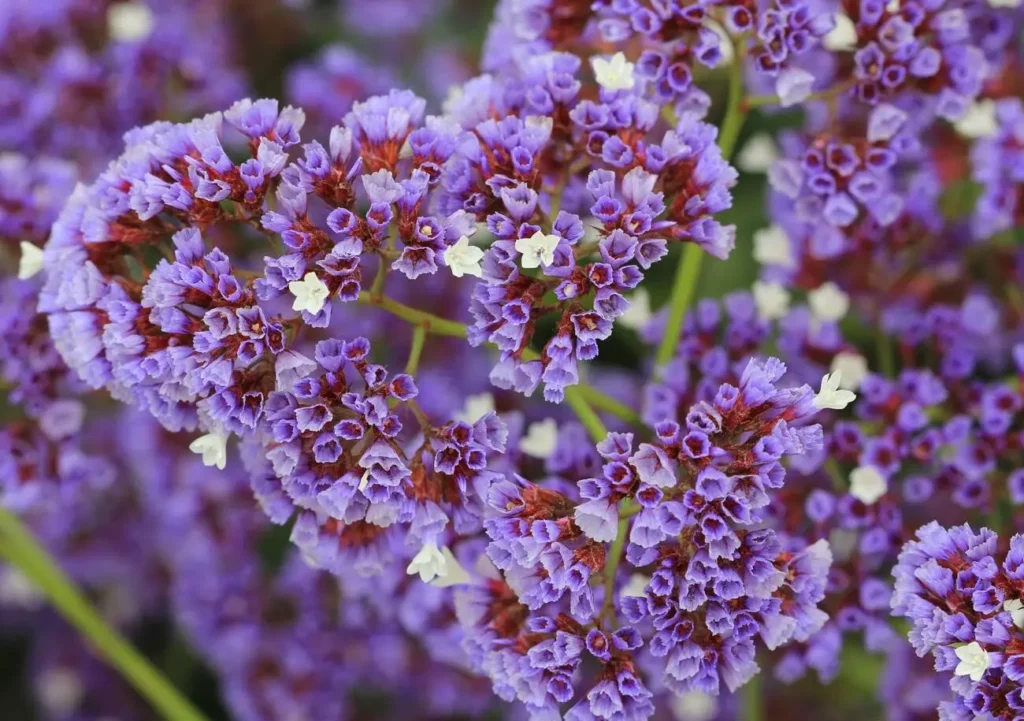
The best time to plant Annual Statice is in the early spring after the last frost date has passed. This timing allows the seeds or seedlings to establish before the warmer months, ensuring robust growth and abundant blooms during the flowering season.
Planting Annual Statice in early spring capitalizes on the moderate temperatures and increasing daylight, providing an optimal environment for root development. This timeline also minimizes the risk of frost damage, which can stunt growth or even kill young plants. By establishing early, Annual Statice can focus its energy on root establishment, leading to stronger, healthier plants that are more likely to produce vibrant blooms.
Consider starting seeds indoors in late winter for a head start or direct sowing outdoors once soil temperatures are consistently above 60°F to kickstart the growth process effectively.
How to Plant Annual Statice Seeds?
Planting Annual Statice seeds is a straightforward process that involves preparing the soil, sowing the seeds at the appropriate depth, and providing adequate watering for germination. Proper care during the planting phase sets the foundation for healthy plant development.
Once the seeds are selected for planting, it is essential to ensure they are of good quality and free from any signs of damage or disease.
Next, prepare the soil by tilling it to a fine texture and removing any weeds or debris.
Sow the seeds at a depth of about 1/4 inch and lightly cover them with soil.
Water the planted seeds gently but thoroughly, ensuring the soil is consistently moist but not waterlogged.
During the seedling stage, maintain a close eye on the moisture levels and provide additional care as needed to support their growth.
What is the Best Method for Planting Annual Statice Seeds?
The best method for planting Annual Statice seeds is through direct sowing into the garden bed or container, ensuring the seeds are placed at the recommended depth for germination. Direct sowing minimizes transplant shock and promotes strong root establishment.
This direct planting method allows the seeds to grow undisturbed in their intended location, optimizing seed viability. By avoiding the need to transplant seedlings, Annual Statice plants are able to develop deeper, more extensive root systems from the outset, leading to better nutrient uptake and overall plant resilience. Direct sowing helps to adapt the plants to their specific growing conditions right from the start, increasing their chances of thriving and producing healthy blooms.
How Far Apart Should Annual Statice Seeds Be Planted?
Annual Statice seeds should be planted approximately 8-12 inches apart to allow ample space for plant growth and prevent overcrowding. Proper seed spacing facilitates air circulation, reduces competition for resources, and promotes healthy plant development.
Adequate seed spacing is crucial for strong roots and nutrient absorption. Crowded seeds lead to stunted growth and disease susceptibility. By spacing Annual Statice seeds properly, each plant can thrive.
How Deep Should Annual Statice Seeds Be Planted?
Annual Statice seeds should be planted at a depth of approximately 1/8 to 1/4 inch in the soil.
Optimal planting depth is crucial for seeds to have sufficient soil contact, facilitating nutrient and moisture exchange for healthy germination. Planting too shallow risks drying out or washing away, while planting too deep restricts light and oxygen access, stunting growth. Correct depth ensures robust root establishment and vigor for seedling growth.
Caring for Annual Statice Plants
Proper care is essential for maintaining healthy Annual Statice plants and promoting abundant blooms. This includes regular watering, appropriate fertilization, and occasional pruning to ensure optimal plant health and longevity.
- When it comes to watering Annual Statice, it’s important to strike a balance. These plants prefer slightly dry conditions, so be cautious not to overwater. Allow the soil to dry out between waterings to prevent root rot. Using a well-draining potting mix can also help maintain the right moisture levels.
- For fertilization, apply a balanced liquid fertilizer diluted to half strength every 4-6 weeks during the growing season to provide necessary nutrients.
- When it comes to pruning, deadhead spent flowers to encourage continuous blooming and remove any damaged or diseased foliage to prevent the spread of issues.
How Often Should Annual Statice Be Watered?
Annual Statice plants should be watered consistently to keep the soil evenly moist but not waterlogged. A weekly watering schedule, adjusted based on weather conditions, is recommended to support plant growth and blooming.
It is important to water Annual Statice plants deeply, ensuring the water reaches the root zone.
Usually, giving around 1 inch of water per week is enough, but this can vary based on factors like temperature and soil type.
To determine if your plant needs water, check the soil moisture level by inserting your finger into the soil. Signs of overwatering include wilting, yellowing leaves, and root rot, while underwatering may cause the plant to become dry and brittle. Maintaining proper soil moisture levels is crucial for the overall health and vigor of the Annual Statice plant.
What Type of Fertilizer Should Be Used for Annual Statice?
A balanced, slow-release fertilizer with equal parts of nitrogen, phosphorus, and potassium is ideal for feeding Annual Statice plants. This type of fertilizer supports healthy growth, vibrant blooms, and overall plant nutrition.
It is crucial to provide Annual Statice with the right nutrients at the right time to ensure they thrive. When it comes to fertilizing Annual Statice, timing is key. The best time to apply fertilizer is in early spring, just before the growing season begins. Incorporating the fertilizer into the soil around the base of the plant is an effective method that allows for gradual nutrient release. This approach helps prevent nutrient runoff and promotes better uptake by the roots for sustained plant vitality and disease resistance.
How to Prune Annual Statice?
Pruning Annual Statice involves removing spent blooms and dead foliage regularly to promote continuous flowering and maintain plant aesthetics. Deadheading faded flowers encourages new blooms and prevents seed formation.
Shaping the plant through selective cutting helps maintain its compact shape and encourages lateral growth.
Regularly inspecting the plant for any signs of disease or damage is essential in preventing the spread to healthy areas. Promptly removing affected parts improves Annual Statice health and prolongs its lifespan, ensuring vigor and vitality for future seasons.
Harvesting Annual Statice

Knowing when and how to harvest Annual Statice flowers is essential to preserve their beauty for decorative purposes or floral arrangements. Harvesting at the right time ensures long-lasting cut flowers and vibrant blooms.
- By waiting until the flowers are fully mature but still in their early bloom stage before harvesting, you can guarantee optimal color and shape retention.
- Techniques such as cutting the stems at an angle underwater and immediately placing them in a floral preservative solution can help extend the vase life of the flowers.
- It’s crucial to handle the delicate blooms with care to prevent bruising or wilting.
Proper storage in a cool, dry place away from direct sunlight is key to maintaining their freshness. Post-harvest care involves changing the water every few days and trimming the stems to prolong their decorative lifespan. Once harvested, Annual Statice flowers can be used in various ways, including creating stunning floral arrangements, adding a pop of color to wreaths or bouquets, or even drying them to preserve their beauty for long-term decorative purposes.
When is the Best Time to Harvest Annual Statice?
The best time to harvest Annual Statice flowers is when the blooms are fully open and at their peak vibrancy. Choosing the right harvest time ensures the flowers retain their color and form for use in arrangements or dried flower crafts.
Harvesting Annual Statice flowers at this stage not only guarantees their optimal freshness but also allows for the most vibrant colors to be captured. Look for blooms that are smooth, dry, and free from any signs of wilting or discoloration. The stems should be sturdy yet pliable, indicating the flowers are at the perfect stage for cutting. By observing these visual cues, you can ensure that your Annual Statice flowers will last longer and maintain their beauty in bouquets or dried displays.
How to Properly Harvest Annual Statice Flowers?
Properly harvesting Annual Statice flowers involves using sharp scissors or shears to cut the stem just above a leaf node or lateral shoot. This method promotes new growth and flower production for continuous blooming.
Ensure clean, sharp harvesting tools for damage-free cuts. Cut stems at a 45-degree angle for better water uptake and longer vase life. After harvesting, soak flowers in lukewarm water in a cool, dark place for a few hours. Remove submerged leaves to prevent bacterial growth and change water regularly for fresh flowers


